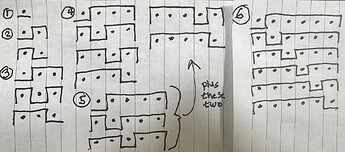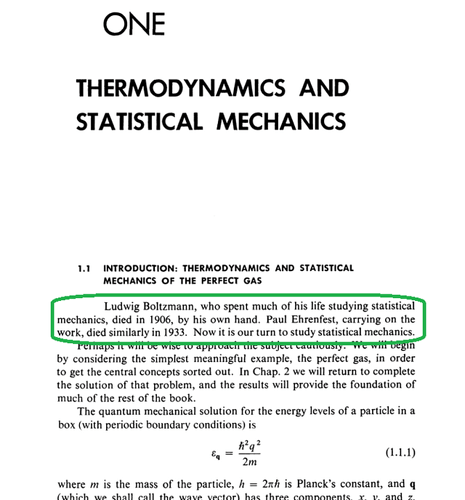I tried to count how many unique strokes there are with strict alternate picking, and I determined it is 112 (this includes going up and down). So for example, if you look at (1), this can be done 12 times = on every string, and then both up and down. Is this useful? I’m not sure what to say! 

I appreciate you, sincerely.
I was curious about this because I realized that I rarely see many of these (the ones with a long jump that hit a string and then have another long jump). I think this is what Anton can do that most others can’t. So, when people say, “I have strict alternate picking,” now I know what to ask them to be sure. The other thing that’s interesting is that if there are merely 112 strokes, some clever person could probably create an exercise that takes a minute or two that covers everything imaginable. I’ve never seen such a thing, but perhaps it exists?
Uhh what?
I have strict alternate picking. Are you going to ask me if I play all 112 permutations you’ve identified?
My apologies, but I am utterly confused by the diagram… and the 112 unique strokes… i am kind of dense though, so please explain? Thanks!
Not in the sense of being judgmental, but out of curiosity if you can play anything with strict alternate picking, or just some subsets that are important to you.
Sorry, you’re not dense at all. The lines try to trace the tip of the pick. Lines above the strings fly above them. Lines below the strings can hit them. The Pick is drawn ascending or descending vertically, but this is more of artistic license on my part.
The simplest stroke is (1), where the pick starts down and stays down; it need not rise.
The next simplest stroke is (2), where we see what I believe people call inside and outside picking (two cases).
The next simplest stroke is (3), where the first and last case are common, but the middle case seems demanding: It’s climb up, skip a string, hit a string, skip a string, and come down. (The reason I say come down is that the next stroke will be an upstroke and have to hit that immediate string that was just passed over.).
So it’s not that hard to understand, it’s just that I don’t explain anything, and you have my apologies for that.
If you’re curious about why there seem to be 112 cases, I can try to explain why, but I’m not sure that anybody would care much.
I’m actually curious - let 'er rip! PS thanks for the explanation! makes sense now!
So let’s only count downstrokes (and double them at the end).
So we multiply the number of places that we can fit the pattern times the number of patterns.
(1) 6 * 1
(2) 5 * 2
(3) 4 * 3
(4) 3 * 4
(5) 2 * 5
(6) 1 * 6
So we add them up, 6 + 10 + 12 + 12 + 10 + 6, for 56. Double that (for both directions) for 112.
So it’s all pretty obvious, wouldn’t you say?
So, as great as Anton is, his speed with the simplest of alternate picking motions (like a completely single escape run) is still much, much greater than his speed at the more complicated motions you’re bringing up. So… what sort of difference between maximally simple and maximally difficult would you rate as being highly skilled?
I’m not qualified to answer your question but I can say that I never thought much about alternate picking in the past and missed that it has lots of these very complex strokes. I agree that these might be slower, and if somebody needs them, their tempo will now have to be slower.
So, it’s interesting that strict alternate picking does have some stuff that’s pretty tough! So, the question goes to the usual escape hatches, need one arrange the music like that, and so forth. But even being aware of those types of strokes was pretty interesting, I had no clue, and I don’t see them mentioned, either. (Somewhat strange.)
I’m not sure I follow this - but could this explain why when I learn one lick well for alternate picking, it doesn’t automatically mean I can play another well? E.g. can play descending fours, but can’t then play the lick from the Pepsi ad?
So if someone doesn’t incorporate very wide string skips, they can’t actually “play anything” with strict alternate picking?
This seems to be a theoretical discussion that’s disconnected from pragmatic guitar playing.
Yes, that’s right, but “anything” in the sense of an arbitrary piece of music with, say, big jumps. I’m sure there is lots of great music that they might be able to play with the strings closer together.
Each artist will have different requirements, and this multi-octave jumping might not be musically relevant for most people, I agree with you about that.
Yeah, this is where my head’s at too.
It’s possible I just missed something or don’t understand where you’re going, though, so… Could you maybe try to explain why it matters that there are 112 possible alternate picking strokes, or I guess what you thinbk a guitarist needs to do with this information, that will help them become a better guitarist?
I don’t get it… but I’ve also had people change my mind here before, so who knows.
Been trying to figure out how to say this for a couple days now:
Enumerating and classifying things is a pretty common practice in certain fields like pure math (I’m not an expert here! Defer to Gilroy) and to a lesser extent in physics, and can yield useful insights. I’m not sure the utility of it for guitar, but people mocked Boltzman for ages and his work is some of the most important physics in the last 200 years!
That is exactly what I was thinking of when I wrote this. I think we actually used this book in grad school, hah.
I’ve been working on “pick everything” for the past 3 years. Lifelong pursuit I guess but I’ve made good progress. As Forest Gump said “I am not a smart man” so I can’t get into math beyond balancing my checkbook. That’s by no means a knock at the premise of this thread. Below is just “how I think of it”, which I think is pretty simple.
This is highly contextual to my approach which I’d class as mixed escape or some flavor of 2 Way Pickslanting, wrist based. When I have to change strings, I have a strategy for each of these scenarios:
- Outside ascending
- Outside descending
- Inside ascending
- Inside descending
Also, occasionally, if I can swipe to make part of a lick easier, I’ll swipe. I try to not do it systematically other than isolated situations where it’s a cool “hack”. My goal is to pick everything with clean changes.
It’s gonna get nuanced if we think about the player’s preference for USX vs DSX but the above covers me even for 1nps with string skips. Again, I can’t question the math in the OP. But these 4 pickstrokes are a smaller number than 112 lol!



